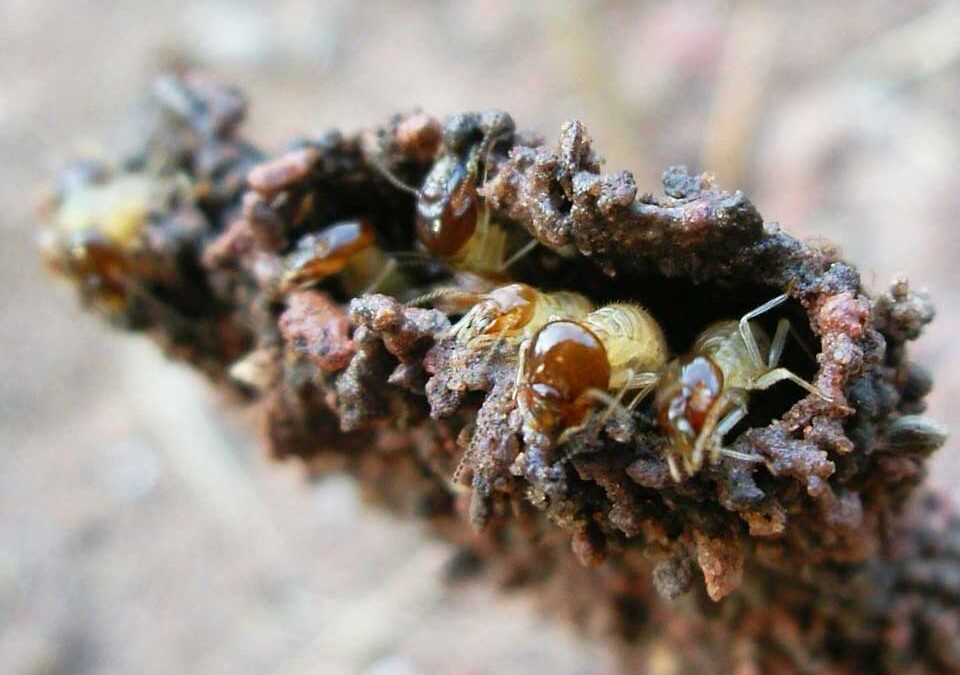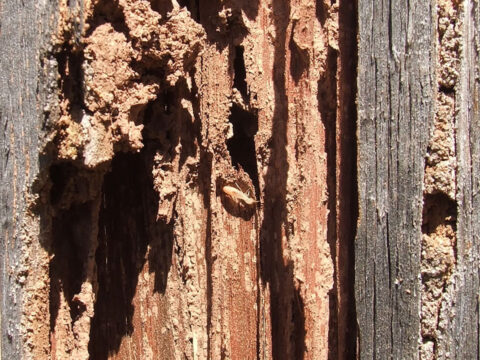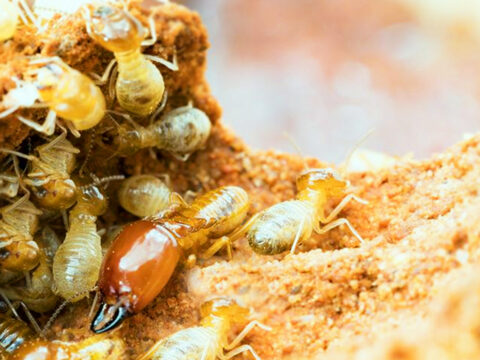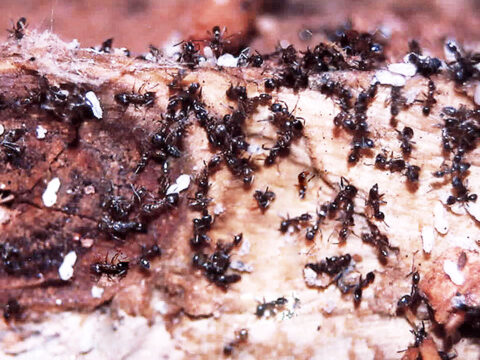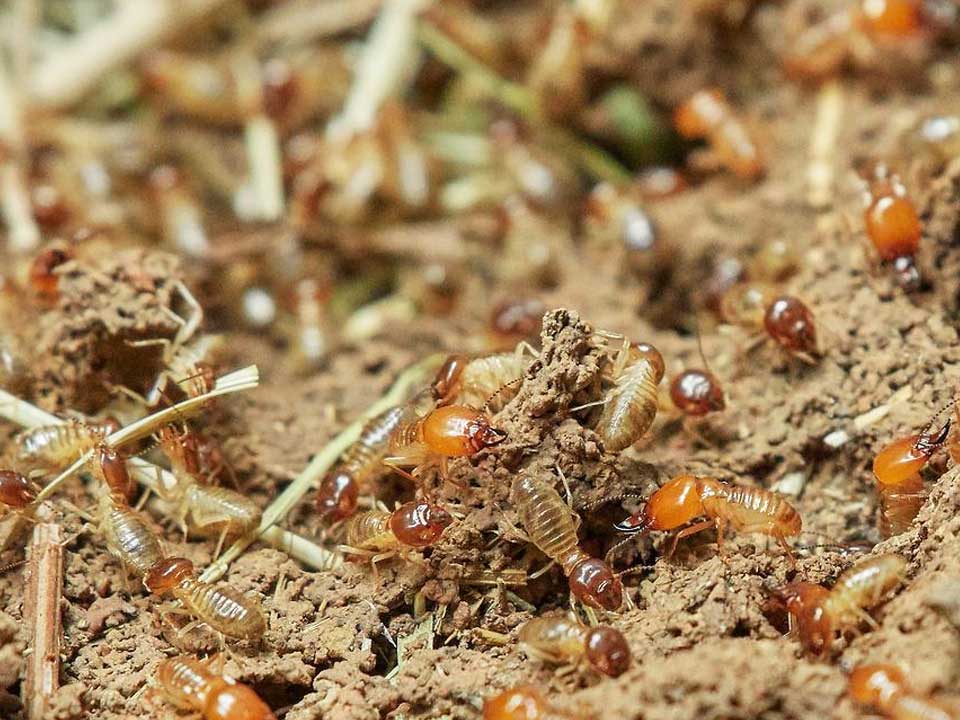
Are Termites Bad For Your Garden?
May 18, 2022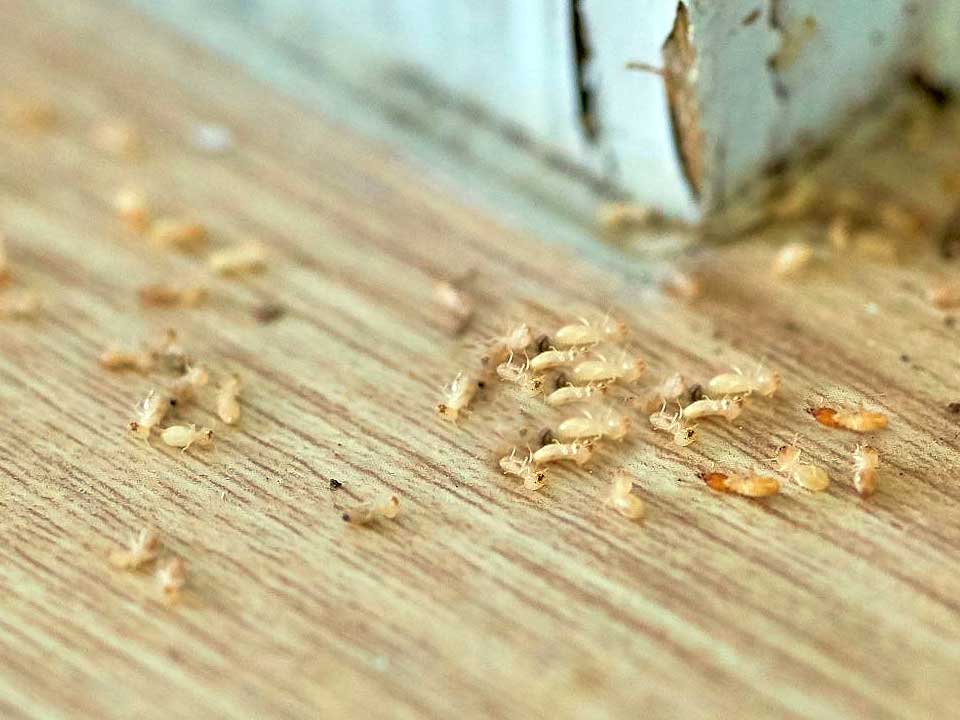
Can Termites Die On Their Own?
July 20, 2022Termites mainly consume wood from which they derive cellulose and the nutrients they require for survival. Termites are special creatures as they have protozoa and unique bacteria in their guts that make enzymes that allow them to easily break down the cellulose fibers into glucose molecules and obtain energy from them.
However, these pests can eat also other types of food besides wood, and they specifically target foods for their cellulose content. But do they have the same cravings for the food that humans eat? Read on to find out!
Do Termites Eat Anything Other Than Wood?
Termites have been known to eat through various materials to get to cellulose-rich foods. Besides the regular wood and plant fibers, termites will also consume anything that is made of wood, such as paper and cardboard. Cardboard is found all over the house and is typically used as an item for storage purposes. You may not see your cardboard box for quite some time and the next time you look inside, you may notice that chunks of it are missing as termites will munch on your cardboard and paper food storage boxes.
In fact, to access food, termites will try to chew through nearly any material that is softer than their hard serrated jaws, for example drywall, foam, and even thin sheets of lead.
The same goes for plastic containers and packaging. There’s a common misconception that termites consume plastic as there have been numerous instances where homeowners spotted termites in plastic jars. Even though termites cannot eat and digest plastic, to access a food source that lies inside the plastic, they will try to break through and chew on this material.
What Human Food Do Termites Like To Eat?
STARCH AND GRAINS:
Starch is a carbohydrate that’s naturally found in plenty of grains and starchy vegetables, such as rice, wheat, corn, potatoes, manioc, beans, peas, and bananas. Humans also consume starch in foods such as pasta, cereals, and bread. When termites eat wood, the wood particles are converted from indigestible cellulose to starch. Later, the insects convert that starch into sugar, which is their functional source of energy.
Grains, such as wheat and rice, often get invaded by pests like termites or other pantry insects. But there are ways you can save your grains.
Since termites hate the smell of cloves, cinnamon, and cardamom, you may put some clove buds, cardamom, or cinnamon sticks in the jar of the raw rice you have for storage. Another popular method is to place unpeeled garlic bulbs in the storage jar, and thi is a great way to avoid rice being ruined.
SUGAR:
You may realize that cellulose is present in many human foods like sugar. So, do termites eat sugar?
Cellulose is the main attractant for these pests and it’s in everything that’s made out of plants, for example paper and cardboard. Cellulose is an insoluble substance found in plant cells. It is a sugar molecule, that is, it consists of glucose monomers. As you know, glucose is a form of sugar. So, we could argue that termites primarily eat sugar, not wood.
Worker termites pass on the cellulose-turned sugar substance through a mouth-to-mouth feeding process.
But because termites prefer to extract cellulose from their food rather than complete sugar, you do not have to necessarily worry about these insects raiding your kitchen pantry the way ants do.
SALT:
Table salt, or even Epsom salt, is a great way to get rid of termites. Salt can actually kill termites if they eat it, however, it will not be enough to completely wipe out the entire infestation.
The salt contains chloride and sodium that absorb fluids from the insect’s body when they consume it. The body becomes dehydrated, which leads to the death of the termite. Therefore, these pests tend to avoid salt, but also because they can’t find any cellulose in it.
VINEGAR:
Termites don’t like to consume vinegar. Vinegar contains acetic acid that has a strong smell and taste, and it can kill termites because they are not able to digest it. Even if only the insects come into direct contact with the vinegar, the acetic acid will permeate through the outer layer of their body, soften their exoskeleton, and cause it to decompose.
VEGETABLES AND CROPS:
Termites are able to find cellulose in many of the vegetables and crops that we eat, such as cabbage, kale, broccoli, cauliflower, brussel sprouts, corn, sorghum, soybeans, sugar cane, and many more.
For this reason, they attack and eat live plants with roots, and a wide range of crops, destroying them. Corn is the most frequently damaged grain crop by termites.
Therefore, these pests may be especially harmful if they invade your vegetable garden, flower beds, or potted fruit trees.
In short, termites do not exclusively eat wood as they will consume anything that contains cellulose. These insects are beneficial in the wild, but when they infest your home, they cause a lot of damage and therefore pose a threat.
At Chem Free Exterminating, we work hard to help keep your property safe from termite infestation. We use the most effective methods to diagnose and treat infestations, and solve your termite problem for good. The combination of experience, knowledge, technology, highly trained professionals, and excellent service make us the leading termite exterminator company in Orange County, California. For more information or to request a quote, call us today!

